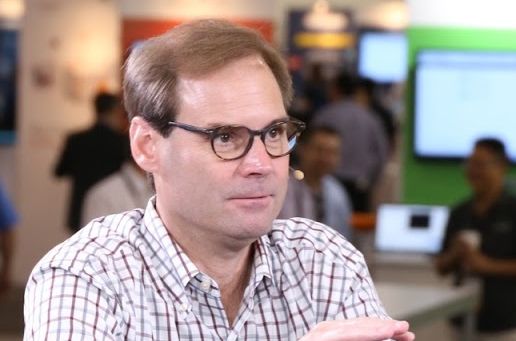 BIG DATA
BIG DATA
 BIG DATA
BIG DATA
 BIG DATA
BIG DATA
Hortonworks Inc. today beat analysts’ estimates on both revenue and profit in its third quarter, providing further evidence that its pure-play open source business model is gaining traction.
The company also raised revenue guidance for the fourth quarter and the year. Investors chose to focus on its growing deferred-revenue line and bid the stock down slightly in after-hours trading. But in trading Friday morning, they looked less happy, as shares were falling almost 4 percent.
Revenue rose 45 percent, to $69 million, from the same quarter a year ago, a growth rate that actually accelerated from the second quarter’s 42 percent growth. Support subscription revenue grew 64 percent, considerably better than the 48 percent growth logged in the second quarter. Hortonworks recorded a loss of 24 cents per share, compared with a loss of 68 cents a year ago and analysts’ consensus estimate of a 40 cent loss.
Equally important: The company said it’s on track to break even on a cash flow basis during the current quarter, meaning that the business will be fully self-sustaining. That’s a promise it has been touting for a number of quarters.
Executives said business growth is being driven by a combination of factors, including increasing acceptance of big data by international companies, a strengthening partnership with IBM Corp., popularity of its Hortonworks DataFlow streaming analytics platform and initial positive reaction to its new DataPlane Service, which helps customers unite disparate data lakes spread across an organization.
IBM has been targeting data governance as an opportunity to help organizations cope with massive data growth, and Hortonworks is its preferred big-data partner. “We’re very pleased with traction we’re seeing with IBM in the field as well as on the engineering side,” said Hortonworks Chief Executive Rob Bearden (pictured). “We’re focused on expanding their data governance platform and migrating their customers to HDP,” he added, referring to Hortonworks’ stock symbol. IBM announced new data governance products earlier today.
HDF was included in nine of the largest 12 deals the company signed during the quarter as organizations increasingly adopt real-time processing, Bearden said. “Realization of the value of streaming data is accelerating HDF adoption,” he said. The new DataPlane Service is complementary in that it provides a “bridge to bring all of those big data platforms together.”
Strengthening demand among enterprise customers is good news for Hortonworks’s outlook, said Charles King, president and principal analyst at Pund-IT Inc. “It should also profit from the growing interest in big data analytics platforms, particularly Hadoop and related components that are central to Hortonworks’ expertise,” he said.
The company’s core financial results were solid across the board. International revenue grew 62 percent and now makes up nearly 30 percent of total revenue. Gross margins improved to 72 percent from 61 percent a year ago and operating expenses fell thanks to tighter cost control.
Deferred revenue, which refers to advance payments for products or services that will be delivered in the future, grew to $151 million from $130 million in the fourth quarter of 2016. Growth in deferred revenues concerns some investors because it indicates the company will be spending more time earning money that’s already in the bank, rather than generating new sales.
Chief Financial Officer Scott Davidson said the nature of Hortonworks subscription-based business tends to pull deferred revenue higher and penalize the company’s market performance. “Over the last year we’ve seen more and more deals that didn’t necessarily have an attachment to professional services, which brings revenue in quicker,” he said. “That’s counterbalanced, though, by longer-term deals. We’ve been optimizing the business for revenue rather than billings because we weren’t getting the P/E [price-to-earnings] multiples we thought we deserved.”
Executives said market opportunities are so vast that a principal concern is choosing which opportunities to pursue. “We’re playing across three of the biggest growth markets there are: IoT [internet of things], big data and cloud,” Bearden said. “Each of our platforms is applicable across all of those markets. That opens up so many opportunities that we have to be very surgical about how efficiently we can do things.”
Davidson emphasized that cost control and a path to profitability will continue to be paramount. “We have to look at how we can address markets as quickly as possible but not burn cash,” he said. “We want to take market share where we can, but do it with ROI in mind.”
Fundamentally, however, the dynamics of the big data market present almost unlimited upside, Bearden said. “It reminds me of selling [enterprise resource planning] back in the ’90s, when it was being adopted at scale,” he said. “It’s just like that.”
THANK YOU